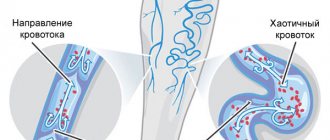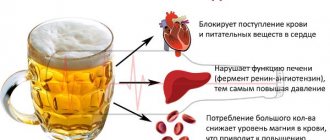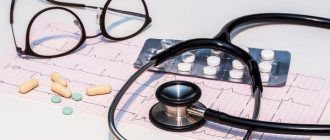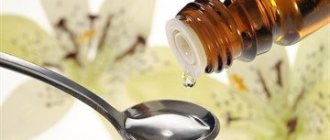Varicose veins are a serious problem for many people who, due to their lifestyle or work activities, spend a lot of time in an upright position. Therapeutic exercises recommended for varicose veins allow you to avoid many unpleasant manifestations and complications of this disease.
The benefits of therapeutic exercises for varicose veins
Varicose veins are a pathology of the vascular wall, due to which deformation of the vein occurs, the formation of a kind of “pouch” filled with blood. With this disease, the functioning of the vascular valves that prevent the reverse flow of blood is disrupted, and the patient may feel heaviness, muscle pain, and also notice the appearance of swelling and protruding saphenous veins. But if the superficial process is more unpleasant due to a cosmetic defect, then with varicose veins of the deep veins of the lower extremities or other parts there is always a risk of thrombus formation and the development of a life-threatening complication - pulmonary embolism (PE).
Gymnastics, developed by phlebologists for varicose veins, allows you to solve several problems at once:
- Stimulate the outflow of venous blood by mechanically pushing it out with contracting muscles;
- Increase the tone of the muscles of the vascular wall, make it more elastic and firm;
- Activate blood circulation and gas exchange in tissues;
- Prevent blood stagnation and blood clot formation;
- Reduce symptoms of the disease such as heaviness, muscle spasms, pain, swelling, changes in sensitivity.
It is necessary to engage in exercise therapy for varicose veins of the superficial and deep veins wisely, taking into account the indications and contraindications for its implementation.
What are varicose veins
Varicose veins are a pathology of the blood vessels of the lower extremities, which reduces the tone and elasticity of the veins. The process leads to the formation of nodes due to excessive stretching of the walls of blood vessels.
The disease can be caused by the following factors:
- Prolonged stay in a sitting or immobilized state.
- Hereditary predisposition to the development of varicose veins.
- Excess body weight.
- Changes in hormonal levels. Most often, the disease affects women who are in a state of menopause or pregnancy, after childbirth.
- Age over 50 years.
- Injuries of the lower extremities.
- The formation of nodes and excessively enlarged veins occurs due to frequent standing for long periods of time. This leads to stagnation of blood in the veins.
Who should exercise for varicose veins?
Therapeutic exercises for varicose veins of the pelvic organs, legs, and arms are indicated not only for people who have already become victims of this disease, but also for people at risk for its development:
- Representatives of professions that are forced to spend long periods of time on their feet - surgeons, massage therapists, cooks, hairdressers;
- People who spend most of their time in a sitting position - cashiers, office workers, programmers;
- High heels lovers;
- Persons who experience frequent flights – pilots, flight attendants;
- Pregnant women;
- Weightlifters and people involved in heavy physical labor.
Since it is usually impossible to give up professional activities, exercise therapy should be done regularly for preventive purposes. It is for these categories of the population that sets of special exercises for varicose veins were developed. You can set aside a few minutes during your workday to quickly perform special mini-workouts.
Exercises to prevent varicose veins
It is better to prevent any disease than to treat it. If you are at risk or have all the prerequisites for the development of varicose veins, start performing preventive exercises in advance:
- Lying on your back, extend your arms along your torso. Raise your straightened legs onto a low chair. Alternately pull the toe of your foot towards you. Do at least 15-20 repetitions with each foot.
- Lying on your back, stretch your upper limbs along your body, lift your straightened legs and spread them as far apart as possible. Perform rotational movements with your feet outward and inward at least 15-20 times in each direction.
- Lying on your back, extend your arms straight along your body. Raise your straight legs 45 degrees and spread them to the sides. Perform circular movements with your legs bent inward and outward at the knees. Do 15-20 repetitions.
- From a lying position on your back, inhale and lift your straightened legs. Lift your buttocks off the floor and help yourself support your lower back with your hands. Make sure your feet are perpendicular to the floor. Spread your legs to the sides and swing left and right and back and forth. Keep your balance.
From time to time throughout the day, do a few light jumps on your toes. Then take a break and jump again.
Contraindications to exercise therapy
It is important to remember that physical therapy for venous pathology has a number of contraindications:
- The last stages of varicose veins, when only surgical treatment can help;
- Inflammatory changes in the veins: phlebitis, thrombophlebitis;
- Malignant neoplasms;
- Complicated pregnancy;
- Severe diseases of the cardiovascular system;
- Acute infectious processes.
Most of these restrictions are relative or temporary, but there are sports that you should definitely not do if you have varicose veins:
- Weightlifting, weight lifting;
- Jumping and running;
- Step aerobics;
- Squats;
- Strong stretch.
Important!
If you have doubts whether you can engage in a certain sport, what exercises you should do and what you shouldn’t, then it is better to consult a phlebologist or exercise therapy doctor: each clinical situation has its own characteristics, and only a doctor can tell you how strict the prohibitions are in your case .
Prohibited and permitted sports
Phlebologists note that if you have an illness, it is unacceptable to do:
- Powerlifting.
- Run fast.
- Step aerobics.
Participation in these sports negatively affects the condition of the walls of blood vessels. Against the backdrop of high-intensity loads, the pressure indicator increases significantly. As a result, the walls of the blood vessels are stretched. A natural consequence is the formation of new nodes.
Phlebologists recommend paying attention to the following sports:
- Water aerobics. Exercising in water helps improve the condition of both skin and blood vessels. In addition, swimming in a short time helps to get rid of excess weight.
- Nordic walking. During exercise, the pressure in the veins decreases, due to which the vessels are able to function normally.
- Yoga. Most asanas are performed with raised legs. In this regard, all phlebologists agree that yoga is the best sport for varicose veins.
- Pilates. During exercise, the lower limbs experience virtually no stress.
Both a trainer and a doctor can provide information about what not to do with varicose veins of the legs. However, it is preferable to first consult a phlebologist. The doctor will help you decide on the type of sport based on the results of diagnostic studies.
Features of physical activity
Before you start training, familiarize yourself with some of the features of their implementation:
- It is useful to exercise in a well-ventilated area or in the fresh air;
- Do not limit yourself in drinking fluids before and after classes, since blood thickening promotes blood clots;
- In some cases, it is advisable to train in compression stockings, but this must be discussed with your doctor in advance;
- Preference should be given to gymnastic elements in a horizontal or sitting position with minimal load on the legs;
- It is advisable to conduct classes a couple of times a day, the main set of exercises should take from a quarter of an hour in the first days to 40 minutes after adaptation to the loads;
- The recommended number of repetitions is from 10 to 25;
- For people involved in professional activities at risk, it is advisable to do a short warm-up, if possible, once an hour during rest;
- All movements should be smooth, unsharp, tasks should be completed at a comfortable pace so as not to cause overexertion - this will only aggravate the situation;
- After performing physical exercises, it is recommended to take a contrast shower to train the blood vessels.
Is it possible to have a massage?
Can. But not all types are suitable, and in some conditions the procedure is strictly prohibited. Therefore, if among all the means of conservative therapy you choose massage, then consultation with a doctor is mandatory.
You should immediately understand that massage is a good preventive measure, but it is not capable of curing varicose veins alone. The beneficial effect of this treatment procedure is manifested in:
- acceleration of blood and lymph circulation;
- improving tissue trophism;
- elimination of inflammatory processes and swelling.
The most suitable types of massage for varicose veins of the lower extremities:
- classical medicinal;
- hydromassage;
- lymphatic drainage;
- synocardial.
Therapeutic massage for varicose veins can be performed according to the method proposed by L.A. Kunichev.
Please note that the main technique used to massage the lower extremities is stroking. Massage movements should be soft, smooth, without jerking or strong pressure. Chopping, tapping and patting should not be used; they cause a reflex spasm of the veins and an increase in venous pressure. In the method presented above, these techniques are used, but only for the buttocks and overlying areas.
When performing a massage, you can raise your legs a little. The use of ointments is excluded.
Hydromassage is a procedure for targeted therapeutic effects on the human body using jets of water supplied under pressure. It is advisable to take this type of massage in specialized institutions, where professionals can select the optimal force of water jets on the limbs affected by varicose veins.
For prevention and in the early stages of the development of the disease, you can self-massage your feet using a slightly cool shower. For a minute, “walk” the shower several times from bottom to top, from your feet to your hips.
There are quite a lot of techniques for performing lymphatic drainage massage (manual, hardware, superficial, deep). Only your attending physician can answer which option is right for you in your specific situation. Only a professional should perform a massage, otherwise the procedure may do more harm than good.
Sinocardial massage is a type of pneumomassage. When it is performed, certain parts of the limb are rhythmically compressed by air waves of alternating pressure. The rhythm of pressure impulses on tissue occurs in accordance with the rhythm of heart contraction.
Other types of massage can be used exclusively for the prevention of varicose veins and only after consultation with a doctor. One of the options for preventive massage can be found in the video below.
Exercise therapy at the initial stage of pathology
We present a variant of therapeutic exercises for the correction of initial varicose veins of any location: legs, arms, pelvic organs.
- Stretching out on a horizontal surface, first bend one leg towards you, then stretch it up, perpendicular to the floor. After holding it straight for a few seconds, return it to the floor. Repeat the exercise with the other leg, and then with both legs at once.
- Now you need to sit on a stool resting on your heels. Move your toes left and right.
- We get up and perform the classic gymnastic element “swallow”, standing on one leg, moving the straightened arms “wings” to the sides and extending the second leg “tail” back.
- For about a quarter of an hour we consistently walk on our toes, on our heels, raising our hips high.
Set of exercises
There are basic therapeutic exercises for the vessels of the legs, arms, and pelvis, which can be performed at different locations of the enlarged venous network.
For legs
Gymnastics for varicose veins of the lower extremities should be done daily, gradually increasing the load.
- We lie flat on the floor, bend our knees slightly, without lifting our soles from the support. We tilt both legs alternately left and right.
- Still lying on the floor, we raise our legs up and consistently perform flexion/extension, circular movements of the feet in different directions.
- We stand up straight, keeping our feet parallel to each other. We rise on tiptoes and smoothly lower ourselves onto the entire sole.
- We repeat the task similar to the previous one, only we keep our toes together and our heels apart.
- We imitate springy walking in place, lifting only the heel part from the floor.
For the buttocks
- Pressing the shoulder blades and heel areas to the surface, we lift the pelvis off the floor.
- We roll over onto our stomach, placing our arms parallel to the body. We swing our legs back, holding them in the highest position for several seconds.
- We alternately tense and relax the gluteal muscles.
- We alternate between full and half squats.
For the pelvic organs
With varicose veins of the pelvis, the most important task is to prevent the formation of blood clots and the development of hemorrhoids. Therefore, a narrowly targeted set of exercises for the pelvic organs was developed:
- We lie down more comfortably on the floor. Alternately cross the raised legs horizontally and vertically.
- Still lying down, we do a “bicycle” - we imitate the rotation of bicycle pedals.
- Now we leave support only on the shoulder blades, supporting the pelvis with our hands. We pull our legs towards the ceiling as long as possible.
- We sit on the floor, support ourselves with our hands behind the body, bend one leg and rest on the sole, lift the other up and return it to the floor.
- We rise, place our legs shoulder-width apart and perform partial squats so that the pelvis lingers briefly at the level of the knees, and then rises upward again.
For upper limbs
Varicose veins of this localization are much less common, but are also a significant problem that limits work and daily activity. This category of patients is recommended to perform the following exercises:
- Lying on the floor, stretch your legs and arms upward at an angle of 90°, imitate vibration movements with your limbs for about 2-3 minutes.
- Sitting on a stool, stretch your arms in front of you, clench and unclench your fingers, spreading them to the sides.
- We put the brushes in a lock and place them on the back of the head. We alternately turn our entire body left and right. The pelvis is motionless.
- Stretch one hand forward, grab her wrist with the other. Try to raise one hand up and hold it with the other. So, through resistance, we consistently raise the right, then the left hand.
Breathing exercises
Breathing exercises can train not only the lungs and bronchi, but also the vessels of the abdominal cavity and pelvis due to changes in pressure when the diaphragm moves.
- We lay down on the floor. We place one palm on the chest, the second on the abdominals. We train diaphragmatic breathing - only the abs move for each respiratory act, the hand on the chest remains motionless.
- We stretch our arms freely along the body. Exhale slowly, bending your legs and drawing in the anterior abdominal wall. As you inhale, straighten your limbs and inflate your stomach.
- Slowly sucking in air through your nose, we move our shoulders as far back as possible, connecting the shoulder blades. While exhaling, relax the shoulder girdle and tilt your head down.
- As we inhale, we raise our arms up, stand on tiptoes, stretch out, and exhale, returning to a relaxed state.
Foot complex
Effective exercises for varicose veins can improve the condition of patients with varicose veins, and in combination with medication and physiotherapeutic treatment, stop the development of the disease and prevent complications.
With advanced forms, training should begin strictly under the supervision of a specialist. Then, with his permission, you can continue to study at home on your own. The complex of physical therapy for varicose veins includes:
- extension and flexion of the legs in a sitting position;
- lifting your legs onto your toes in a standing (sitting) position;
- exercise “Bicycle”;
- leg lifts;
- alternately swing your legs up and to the sides;
- exercise “Scissors”;
- walking on toes and heels.
In order for gymnastics for varicose veins to be effective and safe, it is necessary to coordinate a set of exercises with a phlebologist.
Mikulin's jumps
Effective gymnastics for varicose veins (vibrogymnastics) was developed by the Soviet aircraft designer Academician A.A. Mikulin and described in the book “Active Longevity”. To treat the disease, a special exercise is proposed, including Mikulin jumps.
This exercise for varicose veins can be performed even in advanced forms of the disease, when fast walking and running may be prohibited. You should start charging Mikulin immediately after waking up. To do this you need:
- Stand up straight with your arms down. As you inhale, rise slightly on your toes (1-2 cm). As you exhale, with a sharp but gentle movement, lower your heels to the floor. The thrusts should be hard, but not painful.
- You need to do Mikulin jumps slowly - 1 push every 1-2 seconds. At a faster pace, the required amount of blood does not have time to accumulate in the intervalvular space of the vein, which will prevent it from flowing into the upper sections, and gymnastics will not be beneficial. After 20-30 pushes, you need to pause (5-10 seconds). It is recommended to do no more than 60 pushes in one approach.
- Strictly ensure that the range of motion is minimal. This leg exercise for varicose veins should not be performed as intense bouncing. A small energetic strike of the heels on the floor is enough to obtain an additional impulse to move the blood upward. Throughout the day you need to do 3-5 approaches of 60 seconds each.
Important information: Stages (degrees) of varicose veins (varicose veins) of the lower extremities
Such gymnastics during VRV on the legs frees the tissues from excess lactic acid and toxins, significantly improves venous circulation, with a sharp push directing the blood upward through the vessels, not allowing it to stagnate. Blood flow in the arteries is facilitated by heart contractions, but the venous system does not have such support. Vibrogymnastics solves this problem.
Mikulin's jumps have a healing effect not only on the large veins of the legs, but also on the affected capillaries. Patients who have tried vibration exercises consider it one of the most effective types of physical therapy for varicose veins. This method is a reliable prevention of varicose veins.
Foot work
Movements to work the feet are done while lying on your back. The legs are raised at an angle of 90°, the toes are extended upward. The work of the feet is to bend them towards themselves and straighten them upward. It is advisable to choose a place to practice so that you can rest your feet against the wall. In this position, the exercise will be available even with poor physical fitness. Such gymnastics for varicose veins in the legs can improve venous outflow.
The next movement is to spread the feet in different directions and join them together. The complex is completed by rotating the feet.
Working with the knees
The reasons for the appearance of varicose veins in the knee joint are similar to those that cause dilatation of the veins of the lower extremities of other configurations. All exercises against varicose veins can be included in a special complex of exercise therapy for this form of pathology.
The most effective will be alternate bending and extension of the knees. The movements are performed lying down (sitting on the floor). To remove some of the load from your legs, you should shift the emphasis to your arms (when sitting) and to your shoulder blades (when lying down).
For a disease such as varicose veins, gymnastics should begin with moderate, feasible loads and proceed at a calm pace. Sudden movements should be avoided.
Straight leg raises
Exercises for varicose veins include straight leg raises. The movements are performed lying down. The legs are lifted up one by one, trying to bring them as close as possible to the chest. When lifting, the toe is pulled up. When lowering your leg to its original position, you need to pull the toe towards you.
When doing gymnastics for varicose veins of the lower extremities, movements should be performed at a moderate pace. Do not continue training, overcoming fatigue; the effect can be achieved by doing several approaches with a feasible load.
Crunches
Healing exercises for varicose veins should include “Twisting.” To perform this, you need to lie on your back, bend your right leg at the knee, and your left leg lies flat. With your right leg bent, step over your left knee, stretching your right knee further to the left. Hold the position for 3-4 seconds. Repeat the movement with your left leg.
When doing therapeutic exercises for varicose veins, patients gradually increase the number of exercises and the number of approaches. The load can be adjusted independently. Fatigue after training should be pleasant. After classes, you should stand under a contrast shower, and then relax while lying down (placing a cushion under your feet).
Important information: How to treat to get rid of cellulite on the legs with varicose veins and which anti-cellulite cream to choose
Bike
Exercises for legs with varicose veins must include “Bicycle” training. To perform it, you need to lie on your back (on a firm, flat surface). Pressing your shoulder blades to the floor, raise both legs at an angle of 45° and make movements that imitate riding a bicycle. Arms are spread out to the sides or pressed to the hips.
When performing the “Bicycle” exercise for varicose veins on the legs, the tempo of movements can be changed arbitrarily, starting with a more moderate one. The load should not be excessively intense. It is not recommended to continue movements to the point of fatigue. Time limit - 10 minutes, gradually increasing the number of approaches.
A complex of therapeutic exercises for varicose veins may include cycling or exercise on a machine. Contraindications to performing the “Bicycle” exercise are:
- heart disease;
- hypertension 2 and 3 degrees;
- postoperative period;
- severe forms of gastrointestinal diseases;
- pregnancy;
- thrombophlebitis;
- hernia.
Birch
The selection of therapeutic exercises for varicose veins on the legs must include the multifunctional exercise “Birch”. The “Viparita Karani” pose, which came from ancient yoga, is one of the basic inverted asanas and is called royal because of its exceptional effect on the body. It was believed that being in a natural position (standing on one’s feet), a person grows old, and by changing the position of the body to the opposite, one becomes younger.
Exercise for legs at home “Berezka” helps to improve the outflow of blood from the vessels of the lower extremities affected by the disease and reduce intravenous pressure. Exercise helps:
- improving cerebral circulation;
- strengthening back muscles and improving posture;
- increasing the flexibility of the spine;
- improving blood supply to the pelvic organs;
- development of the cervical-collar zone;
- stimulation of the endocrine and nervous systems;
- increasing the flow of oxygen into the blood;
- removing salts from the body;
- prevention and treatment of hemorrhoids;
- weight loss.
To perform “Birch” you need to lie on your back, raise your legs with your toes pointed up, support your back, resting your elbows on the floor and your palms on your lower back. You should be in this position for 30 seconds to 1 minute. The exercise is performed at the end of classes.
There are a number of contraindications:
- chronic heart disease;
- neck and spine injuries;
- menstruation period;
- glaucoma;
- otitis.
For diseases of the thyroid gland, it is permissible to include exercise in training only with the permission of a phlebologist.
Raises on toes and heels
Therapeutic exercises for varicose veins include raising your toes and heels (or walking on your toes and heels). Such simple exercises allow you to stabilize lymphatic and venous outflow and get rid of chronic stagnation of blood in diseased veins.
The load during exercises for legs with varicose veins of the lower extremities should be comfortable. The appearance of fatigue serves as a signal to stop training.
To perform the movements, stand with your feet shoulder-width apart. Raise yourself on your toes, stay in this state for 2-3 seconds and return to the original position. To perform movements against varicose veins of the legs, you need to periodically change the position of the feet. Turn your toes in opposite directions and perform lifts in this position. Then turn your heels and do a few more lifts.
Important information: How to treat and what to do when the veins in the legs (arms) hurt
A set of exercises for people over 50 years old
Exercise therapy for people over 50 will be aimed, among other things, at general strengthening of the body.
- In a supine position, we move one-sided limbs to the side. We return to the starting position. We repeat on the other side.
- We lie on our stomachs, resting our palms on the floor at the level of the shoulder joints. Slowly straighten your arms and bend your spine.
- We stand up, stretch our arms up and join our palms. Alternately place one or the other foot with the sole on the inner surface of the opposite thigh. We try to bring the foot as close to the perineum as possible.
- We walk in place for a few minutes.
Preventive complex
If varicose veins have not yet begun, but such a risk exists, it is recommended to perform the following exercises:
- Lie down on a horizontal surface. Stretch your legs towards the ceiling, spread them to the sides, perform rotational movements with the outstretched toes of your feet.
- Similar to the first task, we rotate not with our feet, but with our shins, first clockwise and then counterclockwise.
- From a lying position, raise your legs by placing them on a stool. Bend your feet towards and away from you.
- After performing a stand on the shoulder blades, we spread and bring together the straightened legs.
- Jump on your tiptoes a little.
What is prohibited
Despite the fact that physical activity is beneficial for varicose veins, sports fans are advised to pay attention to a number of exercises that are incompatible with varicose veins.
So, what exercises should you not do if you have diagnosed varicose veins? These include:
- lunges or deep squats with dumbbells or a barbell;
- rock climbing and platform climbing;
- long game of football;
- jumping;
- weightlifting exercises;
- exercises that require the use of leg weights.
This list can be supplemented with other exercises and sports. Prohibited exercises for varicose veins depend on the stage of the disease; the attending physician will help determine their complete list after a complete diagnosis of the health condition.
Additional ways to treat the disease
To normalize the functioning of venous vessels, not only exercise therapy is used, but also wearing compression garments, venotonics, diet, massage and some sports.
Sport
Professional sports activities with varicose veins in the legs and other types of disease are not encouraged. Sports involve intense physical activity, which can damage blood vessels. The following amateur sports activities are possible:
- Water aerobics (except step elements);
- Swimming;
- Cycling (when riding a bicycle, raising the seat higher will be very effective);
- Dancing (not associated with frequent jumping);
- Golf;
- Race walking.
Massage
It is better to entrust massage for varicose veins to a specialist. If this is not possible, then during self-massage you need to perform soft stroking, massaging movements with your hands, kneading your feet, legs, thighs, and buttocks. You need to move from bottom to top.
Attention!
Do not try to actively knead dense veins protruding above the surface of the skin, this can only worsen the situation and provoke inflammation.
Diet
Dietary recommendations for vein problems include eating foods such as:
- Seafood – helps strengthen the vascular wall and increase its elasticity;
- Foods rich in vitamin C - bell peppers, Brussels sprouts, cauliflower, broccoli, black currants, rose hips, dill and parsley, citrus fruits;
- Fresh fruits and vegetables that stimulate digestion and prevent constipation.
The described training will be useful not only to people at risk for varicose veins, but also to every person who leads a sedentary lifestyle, is overweight and wears uncomfortable shoes. Such gymnastics will be useful for the veins and relieve fatigue from the legs.
What exercises can you do?
With varicose veins, physical activity is necessary, because it is thanks to it that it will be possible to improve blood circulation and prevent stagnation. However, not every sport is allowed with this diagnosis. In order not to provoke complications, the best solution in this situation is to visit a phlebologist and coordinate a training complex with him. Safe types of activities for varicose veins are:
- swimming and water aerobics;
- yoga, shaping, stretching;
- race walking;
- Biking;
- golf.
With such a pathology, it is allowed to exercise on an elliptical trainer.
If your doctor allows it, exercises can be done using exercise machines. The following are considered effective:
- elliptical trainer;
- exercise bike;
- stepper










